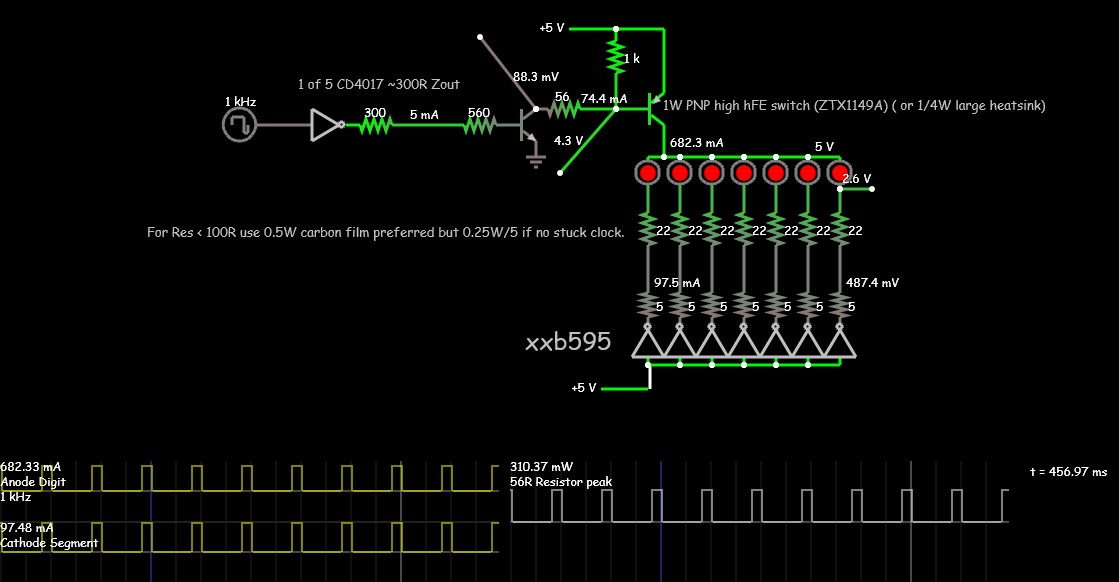actor23
Member level 3
Thanks for information @SunnySkyGuy,
But, i could not reach the point that i am trouble with the brightness of any led. I can not drive IC's properly and i don't know why. Opamp outputs behave strange than the first form of the circuit that i mentioned above, Why ?
My opamp configuration is that inverting input is connected to 3.3V/2 by two 5.6k resistor divider network, non-inverting input of the opamps are connected to msp pins. Outputs of the opamps are inputs of the TC4017 and TPIC5b695 which are SER_IN,RCK,SRCK--- CLK and RST.
What is my mistake ? I don't really understand
But, i could not reach the point that i am trouble with the brightness of any led. I can not drive IC's properly and i don't know why. Opamp outputs behave strange than the first form of the circuit that i mentioned above, Why ?
My opamp configuration is that inverting input is connected to 3.3V/2 by two 5.6k resistor divider network, non-inverting input of the opamps are connected to msp pins. Outputs of the opamps are inputs of the TC4017 and TPIC5b695 which are SER_IN,RCK,SRCK--- CLK and RST.
What is my mistake ? I don't really understand


